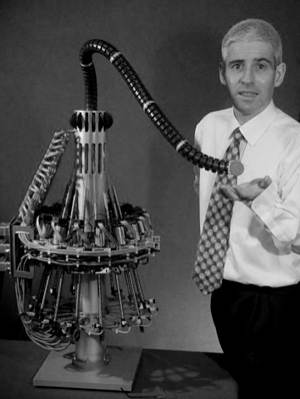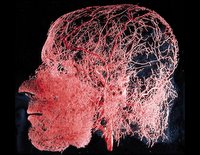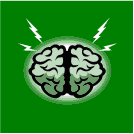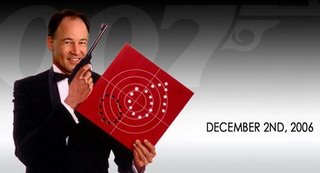
NUTRITION for the brain:
Antioxidants – The How, Why and What
Free radicals are the brain’s most malicious enemies, and the brain is the most vulnerable to their attacks. The brain is mostly fat, which is the generous provider of free radicals. The process by which oxygen reacts with fat molecules is called oxidation – basically producing rancid fat. The brain can literally become rancid and is constantly threatened by this process.
In spite of the heavy hits our brain cells take from free radicals hour by hour, antioxidants can repair 99% plus of this damage.
ANTIOXIDANTS ARE TEAM PLAYERS
They are also sneaky underminers of free radicals. When one antioxidant is depleted in an area of the body, others rush to renew it. This newly understood antioxidant network is what provides real protection from the ravages of free radicals.
ANTIOXIDANT SUPERSTARS:
Vitamin E
Vitamin C
Glutathione – (research indicates that you cannot effectively supplement this)
Coenzyme Q10
Lipoic acid – makes glutathione available, along with resuscitating vitamin E in particular, strongly contributing to glucose stability.
Lipoic acid’s brilliant role is to resuscitate all the other network antioxidants – as well as itself!
Antioxidants can even save you from genetic destiny: They block free radicals from passing through the membrane of the nucleus into the cloistered chamber where genes are located. This in effect stops the DNA from activating disease-prone genes.
The scientific evidence is overwhelming that eating antioxidant-packed fruits and vegetables, as well as antioxidant vitamins, protects against free-radical damage.
Antioxidants slow the aging process of the entire body, and are particularly necessary to brain health.
TOP OF THE LIST:
Generally, fruits and vegetables with the deepest colors. Also tea, and red wine. The pigment itself is a potent antioxidant!
Some of the highest rates fruits and vegetables:
Prunes, raisins, blackberries, blueberries, garlic, kale, cranberries, strawberries, spinach, raspberries, Brussels sprouts, plums, alfalfa sprouts, broccoli, beets, avocado, oranges, grapes, red peppers, cherries, kiwi, beans, grapefruit, kidney beans, onion, corn. New on the scene: Goji berries and raw cacao nuts.
Spinach and strawberries are both very powerful in restoring brain function. A medium-sized spinach salad daily for a week to ten days, along with a bowl of strawberries daily, has been shown to dramatically restore normal brain function. To rejuvenate your brain and actually reverse antioxidant damage, blueberries show the most dramatic effect. Add Vitamin E to this ten day experiment and you may notice a measurable change in your brain function.
Lycopene has also shown specific benefits, particularly in the ability to continue to perform daily functions well into very old age. The more lycopene in the blood, according to an extensive study still going on by Dr. David Snowdon at the Sanders-Brown Center on Aging, the sharper mental acuity in old age. Eating processed tomatoes (which effectively concentrates the lycopene) in the form of tomato paste, tomato sauce, and tomato puree boosts blood’s antioxidant capacity dramatically and can drop the effect of free radicals by as much as 33%.
While I’m writing this, my cup of green tea is steeping. I am sweetening it with Sucanat. THE BEST WAY TO GET SCADS OF ANTIOXIDANT POWER WITH MINISCULE CALORIES: DRINK TEA.
Black tea has on average about 80% more antioxidant capacity than green tea.
However, green tea has four times more EGCG, and is preferred in Japan. Epigallocatechin (EGCG) is a specific antioxidant which is highly favorable.
In one test by Italian researchers, drinking a single cup of strong black or green tea revved antioxidant activity in the blood by 41 to 48%.
By the way, you can forget the powdered or bottled teas. Herbal teas unfortunately do not contain antioxidants, although they may have many other qualities. Decaffeinated tea loses about half the antioxidants found in regular brewed tea containing caffeine. Hot or cold does not matter as long as it is brewed initially.
And milk in your tea?
You can benefit from just a couple of teaspoons of milk in your tea, as it releases the antioxidants. Any more than that will neutralize the value.
Meanwhile, what about chocolate?
Chocolate is rich in antioxidants, packed with polyphenols. Dark chocolate has the most. White chocolate has none. Eating dark chocolate and drinking red wine boosts antioxidant activity beyond the sum of both! Sounds like a good date to me! However, the nutritive value of chocolate is greatly reduced by the processing. You can read about raw cacao online, and it is now available to purchase. I’ve used the raw cacao nibs, sprinkled in yogurt, and found them totally enjoyable.
Chocolate is also one of the most powerful mood elevators, but who doesn’t know that?
Studies indicate that eating antioxidants even late in life can help reverse mental decline that has already occurred.
Be well and enjoy your day,
Suzanna






















